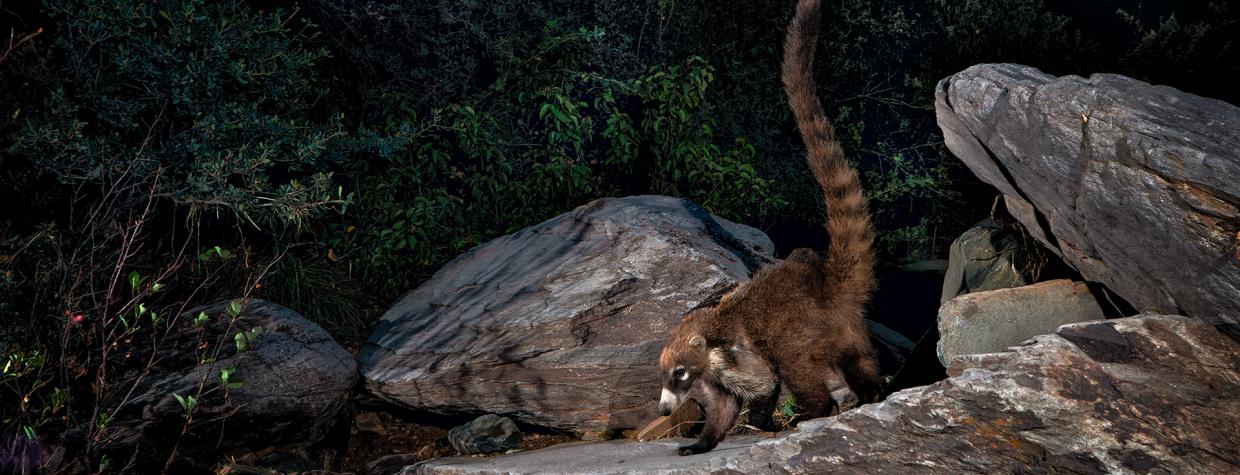At first glance, you might think a white-nosed coati (Nasua narica) — also known as a coatimundi — is a raccoon. Look a little closer, though, and you’ll discover that these precocious mammals have longer snouts and leaner bodies than their Procyon lotor pals. Diurnal by nature, coatis prefer canyons and some riparian areas, so you might spot them in the Superstition and Chiricahua mountains, Aravaipa Canyon and similar environments. Interestingly, coatis use their long tails for balance and communication. According to the Arizona-Sonora Desert Museum, a tail in the upright position means all’s well in the coati’s world, while a downturned tail indicates potential danger. Fortunately for them, though, coatis tend to travel in bands of up to 30 members — there's safety in numbers for these small mammals, which grow to between 10 and 25 pounds.
- Hall of Fame
- Explore
- Photography
- Shop
- Classroom
- Subscriptions

